Cricket is a game played with bats and a ball by two teams of 11 players each. It is especially popular in the United Kingdom and in many countries that once were British colonies. Cricket is played on a round or oval grass field. The action centers on two wickets. Each wicket consists of three wooden stumps and two sticks called bails, which rest on top of the stumps.
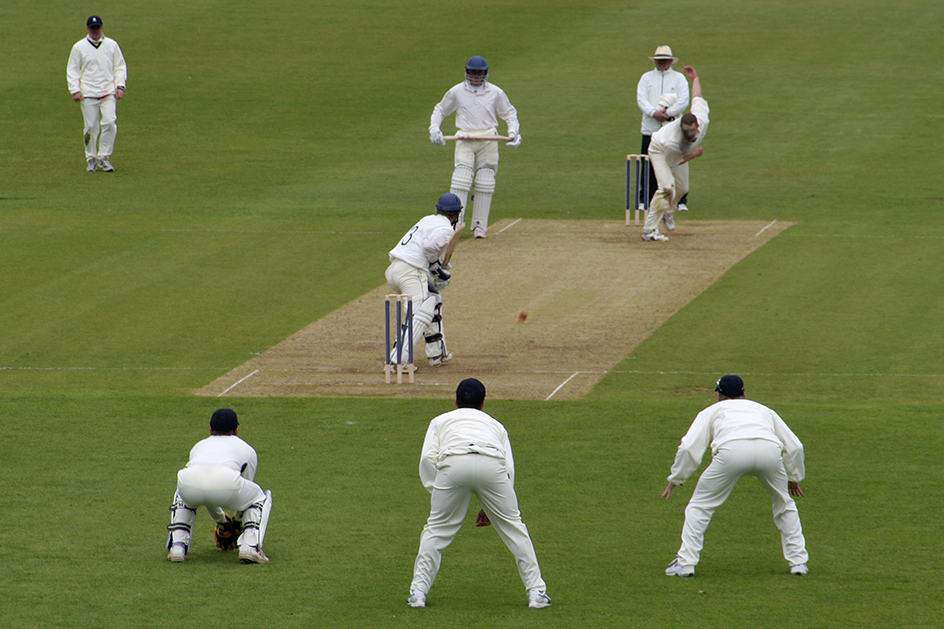
The teams take turns batting and fielding. A member of the fielding side called the bowler bowls (delivers) the ball with a stiff-armed motion from one wicket to the opposite wicket. The ball bounces once in front of the wicket on most deliveries. A fielder called the wicketkeeper stands behind the wicket.
Members of the batting side are called batsmen. A batsman called the striker stands at the far wicket, facing the bowler. The striker tries to hit the ball with a long, flat-fronted bat either to protect the wicket or to score runs for the team. If the ball gets by and knocks a bail off the wicket, the striker is out. If the ball is hit into the field, the striker and a batsman called the nonstriker—a teammate standing at the opposite wicket—may try to score a run.
Only the striker can score a run. A run is scored each time the striker and the nonstriker run to the opposite wicket before a fielder can knock off a bail with the ball. Sometimes they can run back and forth several times before a fielder can return the ball.
The striker is the batsman who is at the wicket opposite the bowler when the ball is returned. The two batsmen remain in (at bat) until one of them is dismissed (put out). The batsman who is dismissed is replaced by a teammate. A major cricket match may last one day or up to five days, and each team may score hundreds of runs. The team that scores the most runs wins. A match can be drawn if neither team can dismiss all the batsmen on the opposing team.
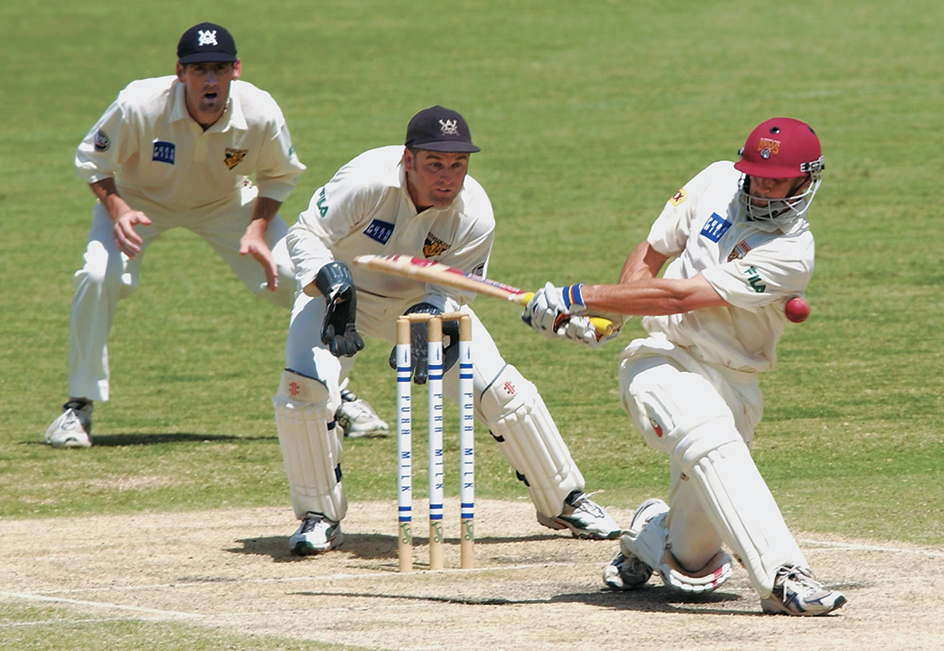
The field and equipment
The field
is called the ground and may vary in size. Most grounds on which official matches are played measure about 450 feet (137 meters) wide and 500 feet (150 meters) long. The wickets are 22 yards (20 meters) apart in the center of the field. They stand opposite and parallel to each other. The area between the wickets is called the pitch. The pitch is carefully prepared and has much less grass than the surrounding field. Pitches in different parts of the world play differently, depending on the type of soil and how it is prepared. For example, pitches in Asia tend to be sandier, and therefore the ball tends to spin. In other parts of the world, the pitches are harder and the ball tends to bounce more. The best teams and players learn to adapt to playing in these different conditions.
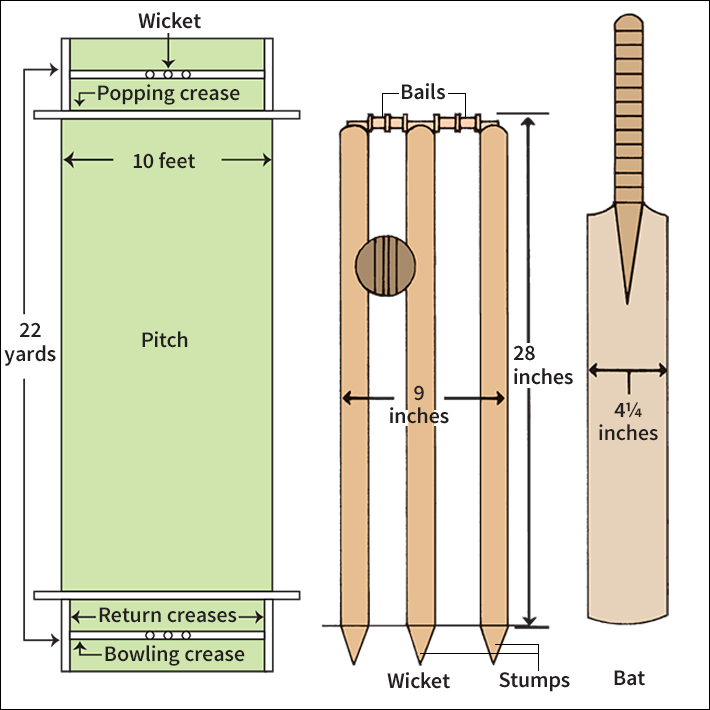
Each wicket measures 9 inches (22.9 centimeters) wide. The stumps of each wicket are close enough together so the ball cannot pass between any two of them. The tops of the stumps stand 28 inches (71.1 centimeters) above the ground. The bails are 43/8 inches (11.1 centimeters) long and rest in grooves on the tops of the stumps. The bails do not rise more than 1/2 inch (13 millimeters) above the stumps.
White lines made by chalk or lime mark certain boundaries called creases. A line called the bowling crease is drawn through the stumps of each wicket. It is 8 feet 8 inches (2.64 meters) long, with the middle stump of the wicket at its center. A line called the popping crease is marked 4 feet (1.22 meters) in front of the bowling crease. The popping crease extends at least 6 feet (1.83 meters) on either side of the center of the wicket but is considered to be unlimited in length. Lines called return creases are marked from each end of the bowling crease. The return creases extend forward to the popping crease and back at least 4 feet behind the bowling crease. However, the return creases are considered to be unlimited in length. The bowler must deliver the ball with some part of the front foot behind the popping crease. The back foot must be between the return creases.
Equipment.
The rules of cricket do not specify the material to be used in making a cricket ball. The best balls have a cork center wrapped with twine, and a leather cover. The ball must be between 813/16 and 9 inches (22.4 and 22.9 centimeters) in circumference, and it must weigh between 51/2 and 53/4 ounces (155.9 and 163 grams). The balls are typically red, but white balls and pink balls are also used in certain types of matches.
The bat cannot be more than 38 inches (96.5 centimeters) long nor more than 41/4 inches (10.8 centimeters) wide at any point. It must be made of wood. The bat has a round handle and a flat, bladelike hitting surface.
Cricket players wear peaked caps or helmets, open-necked shirts, trousers, and spiked or crepe-soled shoes. Batsmen and wicketkeepers wear protective leg pads and gloves. Players who field close to the wicket may also wear such protective devices as shin guards.
The game
A cricket match may consist of one or two periods, each called an innings. First-class matches are played in two innings. A team’s innings ends when 10 of its 11 players have been dismissed. But the captain of the batting side may declare the side’s innings over at any time.
Team captains toss a coin to decide who will bat first. After the first innings of a two-innings match, the captain whose team batted first may order the opposing side to follow-on if the opposing side is behind by a certain number of runs. The opposing team must then bat its second innings immediately after its first innings. The opposing team may be ordered to follow-on if it is behind by 200 runs in a match of five days, by 150 runs in a three- or four-day match, by 100 runs in a two-day match, or by 75 runs in a one-day match. If the team that follows-on cannot catch up, the team that batted first wins by an innings. A team wins by an innings if it scores more runs in one innings than the opposing team scores in two innings. If the team that follows-on takes the lead, the team that batted first can then bat its second innings. In two-innings games, a team can only win if the opposition is bowled out twice. If it is not, the game is drawn no matter which team has scored more runs.
A team may also win by a certain number of wickets. A team wins by wickets if it takes the lead during its second innings and the opposing team has already batted twice. If the team takes the lead after four batsmen have been dismissed, for example, it wins by six wickets because six batsmen have not been dismissed. If a match is not won by an innings or by wickets, the outcome is expressed by the number of runs scored by each team.
Scoring.
Most runs are scored by running from one wicket to the other. Each runner must safely cross the opposite popping crease to score one run. Batsmen also score runs when they hit the ball out of bounds, known as a boundary. They score four runs when the ball rolls or bounces across the boundary line. They score six runs if the ball lands out of bounds without bouncing.
Runs called extras or sundries may also be scored in various ways. Sundries are scored on byes, leg byes, wide balls, and no balls. A bye is a run scored when the ball passes the striker without touching the bat or any part of the striker’s body and without knocking off a bail. A leg bye is a run scored when the ball hits the striker anywhere but on the hands. A ball that hits the hands is played as if it had hit the bat.
A wide ball is a delivery that the umpire rules is out of the striker’s reach. One run is automatically scored for a wide ball. The batsmen may attempt to score more runs by running from one wicket to the other before the ball is returned. A no ball may be called for certain rules violations. The main violations occur when (1) the bowler throws the ball instead of bowling it or (2) the bowler’s feet are not in the proper position when the ball is delivered. A penalty of one run is scored for a no ball. But if a striker hits a no ball and the batsmen score runs, these runs are counted instead of the penalty.
Outs.
There are several ways to dismiss a batsman. The most direct way is bowling a bail off the striker’s wicket. Strikers are also out if they are caught—that is, if they hit a ball that is caught by a fielder before it bounces or that lands in a fielder’s clothing without touching the ground. Either batsman may be run out when trying to score. A batsman is run out if a wicketkeeper or other fielder, while holding the ball in his hand, knocks a bail from the batsman’s wicket while the batsman is between the popping creases.
Strikers are out stumped if they step in front of the popping crease when not attempting a run and the wicketkeeper knocks off a bail. Strikers can be out LBW (leg before wicket) if they prevent a delivered ball from hitting the wicket by stopping it with any part of their body except the hands. They are also out if they break the wicket (knock off a bail) with their bat, clothing, or any part of the body while trying to hit the ball. Strikers are out if they hit the ball a second time except to keep it from hitting the wicket. If the striker or the nonstriker intentionally prevents a player from fielding the ball, the striker is out. Either batsman may be called out for intentionally touching a ball in play with a hand not holding the bat.
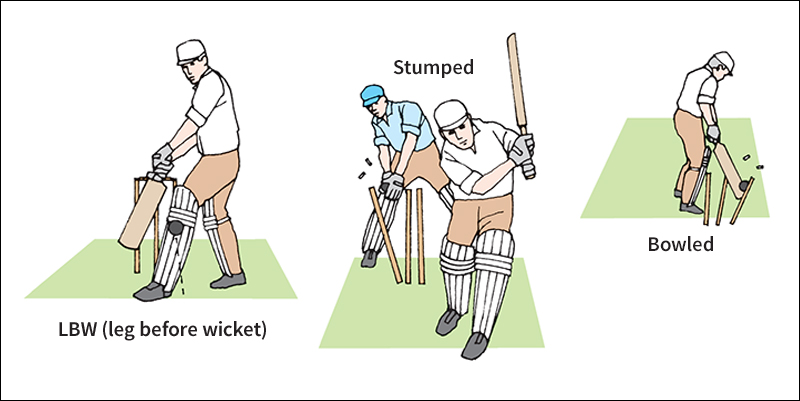
Umpires
make sure the game is played according to the rules, and they settle all disputes. One umpire stands behind the bowler’s wicket to make decisions on whether the striker is caught or out LBW, and to rule on run outs at the bowler’s end. A second umpire stands to the side of the striker’s popping crease to rule on a stumping or run out at that end.

The umpire at the bowler’s end also decides whether the ball is in play. The ball is in play from the moment the bowler begins the run-up to the popping crease. The ball is dead (not in play) when (1) it is finally settled in the hands of the wicketkeeper or bowler, (2) it lodges in the clothing or equipment of a batsman or umpire, (3) it lodges in a fielder’s helmet, (4) it has been called lost, (5) a boundary is scored, (6) a batsman is out, (7) a penalty is awarded after a fielder intentionally stops the ball with something other than the body, (8) the umpire calls “over” or “time,” (9) the umpire suspends play because of an injury to a player, or (10) the umpire calls a case of unfair play.
Playing cricket
The batting side.
The order in which a team’s batsmen will bat is decided by the captain. After a batsman is dismissed, a teammate takes a turn at bat until 10 players are out. One batsman always remains not out.
A batsman may hold the bat any way that is comfortable and effective. Batsmen should stand with their weight evenly distributed and the feet slightly apart. This ensures good balance when playing a shot, which helps provide both power and precision placement. Most batsmen stand with one foot on each side of the popping crease. One of the great skills of batsmanship is the ability to hit the ball between the fielders.
The batting strokes may be divided into two categories, front foot play and back foot play. Each may be used either (1) to attack and try to score runs or (2) defensively to protect the wicket. For both strokes, the batsman swings the bat back in a movement called the back-lift, then brings it forward and down to hit the ball.
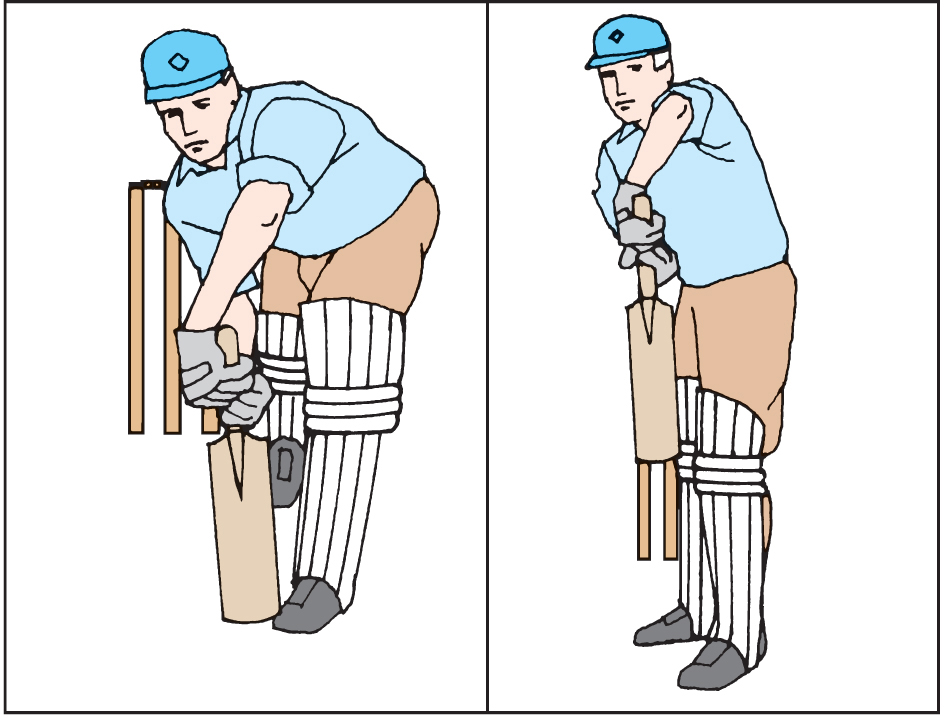
On a front foot stroke, the batsman moves the front foot forward near the path of the ball. When the ball is bowled slowly, the batsman may take two or three steps toward the ball, rather than one long step. A front foot stroke is best for a ball that bounces near enough to the batsman to be hit on the half-volley—that is, as soon as it bounces off the ground. Front-foot strokes are usually made with the bat pointed down.
The back foot stroke is better for a ball that bounces so far in front of the batsman’s wicket that the batsman can see which way the ball moves after it hits the pitch. When playing defensively, the batsman brings the back leg into the path of the ball and points the bat down. There should be no space for the ball to pass between the bat and the batsman’s body. In attacking on the back foot, batsmen use a wide variety of strokes, depending on where the ball bounces and in what direction it moves. For example, they may swing the bat at an angle to the path of the ball with a hook or a cut stroke.
As soon as the bowler delivers the ball, the nonstriker should be backing up (moving toward the opposite wicket) and ready to run. Batsmen do not have to try to score if the ball is hit. On most hits that go in front of the popping crease, the striker decides whether it is possible to score. If it looks like both batsmen can safely reach the opposite popping crease, the striker calls to the nonstriker that they should try for a run. When the ball goes behind the popping crease, the nonstriker decides whether the batsmen should try to score. Misunderstanding between the batsmen is the main cause of run outs. A batsman may hit the ball in any direction.
The fielding side
consists of the bowler, the wicketkeeper, and nine other fielders. The other fielders’ positions vary in name and location. The most common positions are shown in the diagram of the field that appears in this article. The captain directs the fielders to various positions, depending on the strengths and weaknesses of the bowler, and the strategy agreed upon by the bowler and captain to take wickets. The fielders change their placement depending on whether the striker is right-handed or left-handed.
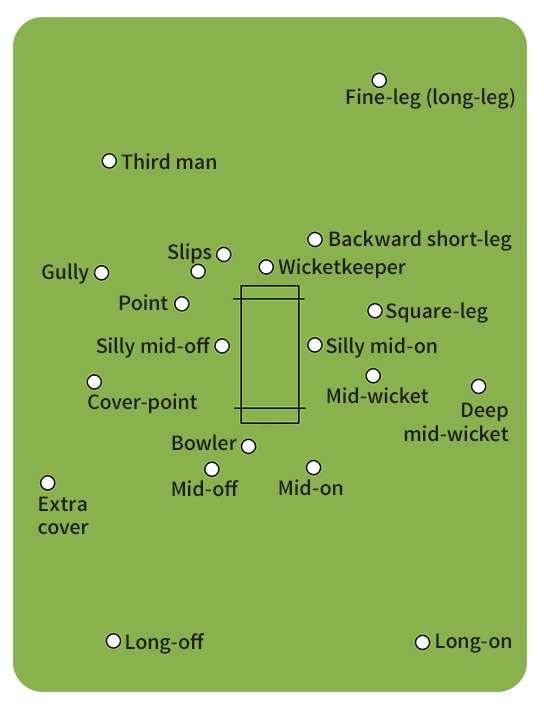
After the bowler has delivered a certain number of balls, the umpire calls “over.” An over consists of six legitimate deliveries. Wide balls and no balls do not count in the total. After each over, the striker becomes the nonstriker and the nonstriker becomes the striker. Two successive overs cannot be bowled from the same end in one innings. In limited-over cricket, the game ends after a certain number of overs rather than after one or two innings. Typically, this is either 20 or 50 overs, but in recreational cricket the number varies.
Good bowling is based on coordinated body, arm, and shoulder motion. The run-up to the popping crease is designed to give the bowler enough power and balance to bowl the ball at the desired speed. At the final stride, a right-handed bowler’s left shoulder should point toward the batsman. When the bowler’s left foot has swung forward, the right shoulder should move forward and point in the direction the ball will travel. The bowler’s wrist must be loose and the hand cocked back before releasing the ball. For the most speed, the bowler continues the arm motion after the release.
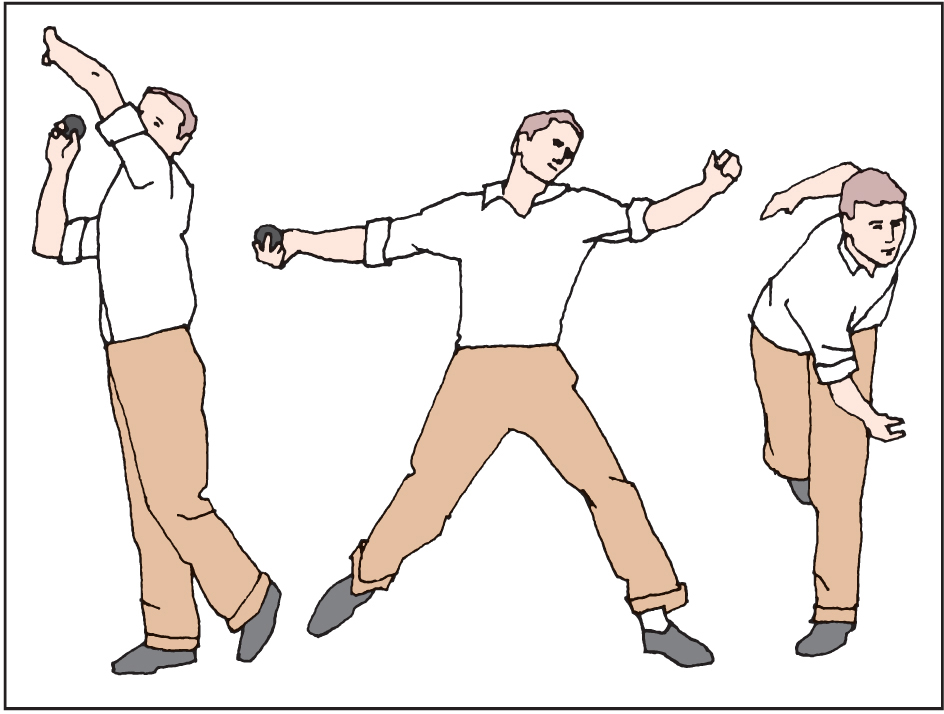
Bowlers try to deliver the ball so it bounces a short distance in front of the batsman. Such a delivery is difficult to hit because the batsman is uncertain whether to play front foot or back foot. In addition, bowlers try to get batsmen out by changing the direction of the ball. Bowlers change the direction by controlling the ball’s speed and by gripping and spinning the ball in special ways. They can make the ball swing (curve or change direction in flight) or break (change direction after it bounces). The ball’s movement can also change based on the angle at which it lands on the seam, a shallow rope band in the middle of the ball. A talented bowler can control the ball’s movement off the seam, making it difficult for a batsman to judge the ball’s direction.
Organization and competition
Traditionally, the chief authoritative body for cricket is the Marylebone Cricket Club (MCC), a private club in London. Since 1788, the MCC has made and published the laws of cricket. It holds the copyright on the laws of the game and controls their revision. Today, the International Cricket Council (ICC) is the international governing body of cricket. It was established in 1909 as the Imperial Cricket Conference. Its name was changed to the International Cricket Conference in 1965 and to the International Cricket Council in 1989.
The highest level of cricket is found in international competitions called Test matches and One-Day International (ODI) matches. Test matches are played over five days. ODI matches are single-day competitions. Official Tests are played between teams representing Afghanistan; Australia; Bangladesh; England; India; Ireland; New Zealand; Pakistan; South Africa; Sri Lanka; Zimbabwe; and the West Indies, a group of islands and countries in the Caribbean. These teams are full members of the ICC. In addition to the 12 full members, the ICC has more than 90 associate members. 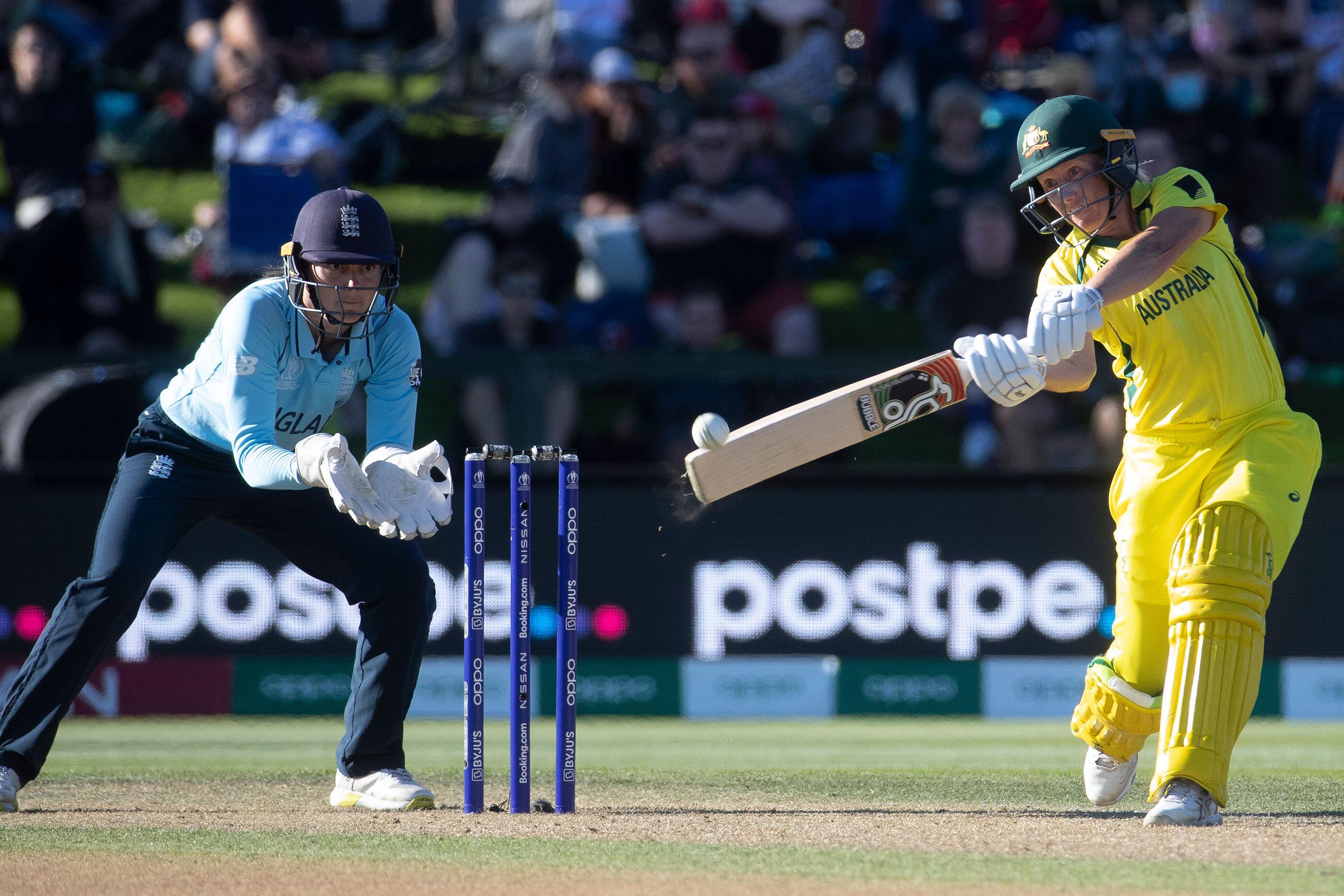
The ICC holds a World Cup tournament for both men and women. The women’s World Cup was inaugurated in 1973 and is held at irregular intervals. The men’s competition, which began in 1975, is held every four years.
In 2001, in an attempt to increase interest in men’s Test match cricket, the ICC introduced the ICC Test Championship. Each of the Test match-playing countries played against each other on a home and away basis within a five-year period. In 2017, the ICC revised the championship format, approving the creation of a nine-team Test championship that began in 2019 and features a final every two years.
The T20 format of competition, which is characterized by power hitting, was introduced in 2004. In T20 cricket, single innings games of 20 overs a side are played. The ICC established the T20 World Cup in 2007. It is generally played every two years. In 2023, the International Olympic Committee added T20 cricket to the 2028 Summer Olympic Games, scheduled to be held in Los Angeles.
Many countries hold one or more championship series. These series include the County Championship in the United Kingdom, the Sheffield Shield in Australia, the Plunket Shield in New Zealand, the SuperSport Series in South Africa, and the Ranji Trophy in India.
Cricket in the United Kingdom
Cricket is played throughout the United Kingdom. But it is most popular in England, where it probably originated. In its earliest forms, the ball was bowled underarm, and bats were shaped like hockey sticks. In the mid-1800’s, overarm bowling became legal, and batsmen began using bats like those of today. In 1859, the first overseas cricket tour took place. An English team went to North America and played against teams in Canada and the United States.
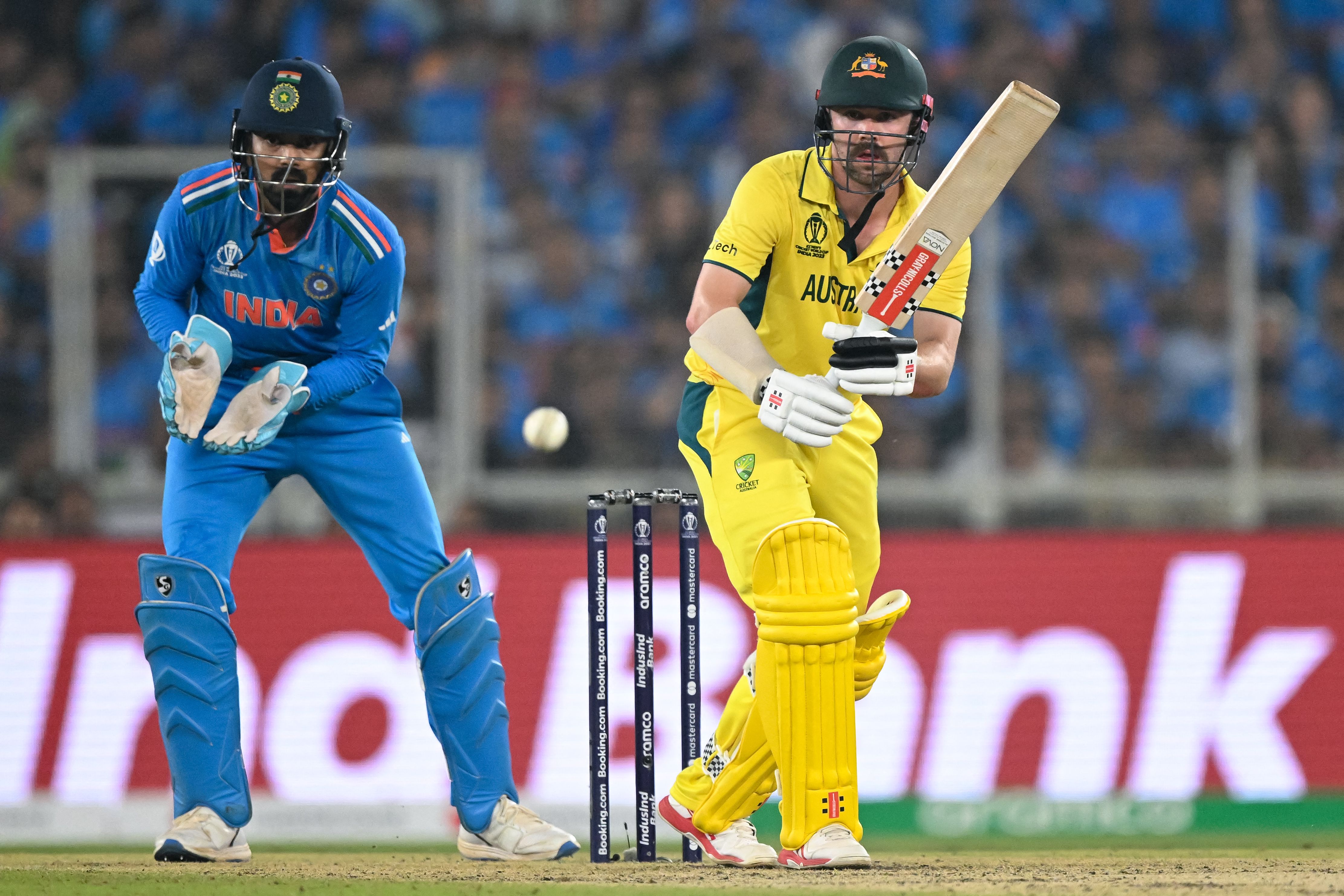
Organization.
Cricket is played as an organized game at many levels. Test matches and similar contests, such as One-Day International matches, are played against other cricketing countries. The Test and county games together make up first-class cricket. The other levels of cricket include school, club, and village matches.
Test cricket evokes great interest, especially the matches between the “old enemies,” England and Australia. The rivalry of these two sides goes back to 1877. But the competitive spirit is just as intense when England plays Test sides from other countries.
Women’s cricket has grown in popularity. A women’s Test side plays international matches. In November 1998, women were allowed to become members of the MCC.
England’s best-known cricket ground is probably Lord’s Cricket Ground at St. John’s Wood, London. It is the home ground of the Middlesex county side and is a venue for Test matches and other regular events. Lord’s is British cricket’s administrative headquarters.
Administration.
The England and Wales Cricket Board (known, for short, as the ECB) is the governing body of all men’s and women’s English and Welsh cricket, professional and recreational. The board appoints the selectors who choose the team to play in Test matches.
History.
There are many theories about where cricket was invented, ranging from France to Scandinavia. However, most sports historians now believe it was probably first played in Surrey, in southern England, in the mid-1500’s, and that it developed from a children’s game. It became a major sport there in the 1700’s. The first printed rules appeared in 1744.
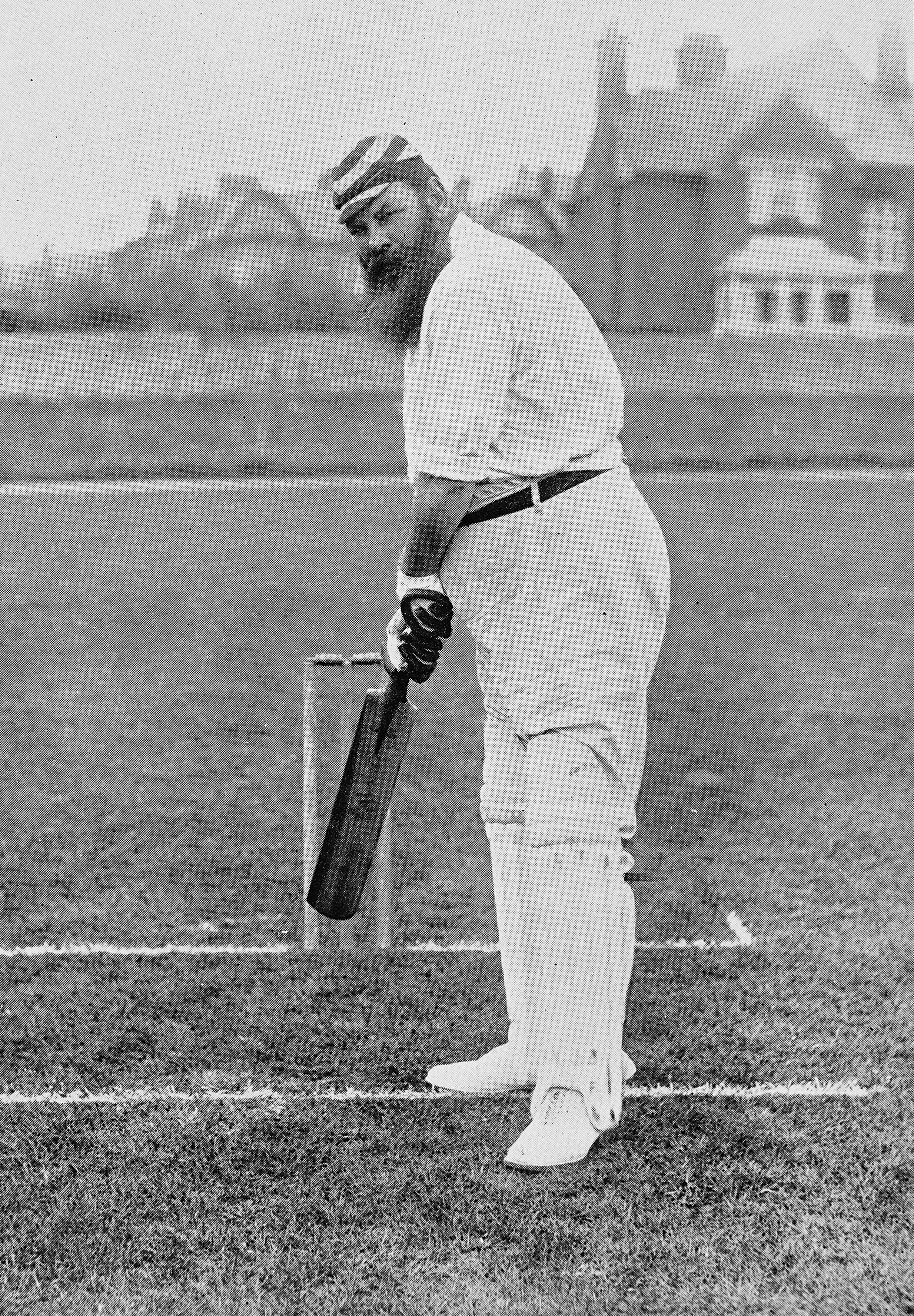
Cricket’s development seems to have prospered in the weald (open country) of Surrey, Kent, and Sussex. Regular organized matches were played by the Hambledon Club on Broadhalfpenny Down in Hampshire from 1750 to 1787. The MCC was founded in 1787 and won early acceptance as the game’s governing body.
The first Test match took place in Melbourne, Australia, in 1877, when an Australian side beat James Lillywhite’s XI by 45 runs. Since 1882, England and Australia have played a regular series of Test matches for the Ashes. See Ashes, The.
The elegance of Edwardian cricket matches was shattered by the effects of World War I (1914-1918), and the game’s long period of recovery spanned the 1920’s. By the 1929-1930 winter season, the MCC was strong enough to send two Test sides to tour New Zealand and the West Indies. England’s 1932-1933 tour to Australia, under D. R. Jardine, was the controversial bodyline bowling series. For a description of this series and its effects on Australian-English relations, see the section on Cricket in Australia (History) later in this article.
The 1960’s, 1970’s, and 1980’s saw many changes, including the development of one-day cricket; the introduction of commercial sponsorship; the proliferation of One-Day International matches beyond the usual Test series; a decline in attendance at county championship matches; and an increase in the number of overseas players at first-class level in English cricket.
In the late 1980’s and early 1990’s, the British national governing body for cricket introduced several changes aimed at raising the standards of first-class cricket among players eligible to play for England. These changes included the introduction of four-day cricket, the imposition of penalties for pitches considered to be substandard, and the limitation of only one overseas player per county club. From 1997, the ECB took more radical action in an attempt to make cricket more competitive. It reorganized both the County Championship and one-day tournaments. The creation of two divisions increased competition and helped concentrate talent for selection to the national team. Reforms were also made to attract a younger audience to the game to help slow the decline in participation in the sport.
Outstanding cricketers.
W. G. Grace heads the list of famous English batsmen. Another batsman of outstanding quality was C. B. Fry. Sir Jack Hobbs scored 197 centuries during his career. Frank Woolley was a left-hander of exquisite skill. Wally Hammond was a batsman of grace and power. Sir Leonard Hutton won fame for his record-breaking 364 at the Oval against Australia in 1938. Great batsmen of the late 1900’s and early 2000’s include Mike Atherton, Denis Compton, Peter May, Colin Cowdrey, Ted Dexter, Geoffrey Boycott, David Gower, Alec Stewart, Graham Thorpe, and Graham Gooch. Ian Botham became one of the finest all-rounders of all time.
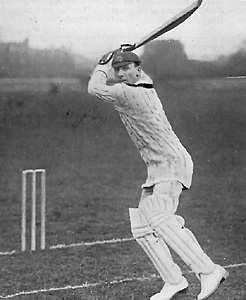
Many experts consider Sidney Barnes the greatest bowler. Other outstanding bowlers include Maurice Tate, Harold Larwood, Hedley Verity, Alec Bedser, Brian Statham, Freddie Trueman, and James Anderson. Trueman was the first bowler to take more than 300 wickets in Tests. Notable wicketkeepers were Godfrey Evans and Alan Knott.
Cricket in Australia
Cricket has been one of the most popular sports in Australia for more than 100 years. Australia is one of the world’s leading nations in international cricket.

Organization.
Cricket is played at all levels in Australia. Many schools throughout the country have cricket teams. The states of Australia compete for the Sheffield Shield. The Sheffield Shield was given by Lord Sheffield, an English patron of the 1890’s, for competition among the Australian states.
Test matches are played between Australia and England every two or three years, alternately in England and Australia. Australia also plays Test and one-day series against the other Test match-playing countries.
Women’s cricket is also popular. A women’s match took place between New South Wales and Victoria in 1891. But the Australian Women’s Cricket Council was only formed 40 years later, in 1931, with New South Wales, Victoria, and Queensland as the founding members. Interstate games were played, and in 1934-1935, an English team visited Australia. Since then, several series have been played both in Australia and abroad.
Administration.
Cricket Australia governs cricket in the country. It originated in 1905 as the Australian Board of Control for International Cricket. From 1973 to 2003 it was known as the Australian Cricket Board of Control.
History.
The first known matches in Australia took place in Sydney in 1803. But casual games were undoubtedly played before that time. By 1840, cricket had taken a firm hold in Sydney.

Cricket was introduced into Tasmania in the early days of settlement. But the exact year is unknown.
Wickets were pitched on Batman’s Hill soon after John Batman selected the site of Melbourne. In November 1838, three years later, the Melbourne Cricket Club was formed. It wielded great influence over Australian cricket for several years, though it worked in harmony with the Sydney Cricket Ground to arrange early tours. In 1838, the first meeting was called in South Australia to form a cricket club. The South Australian Cricket Association was formed in 1871.
Settlement in Western Australia began in 1829. Although cricket was played soon afterward, it was not regarded seriously. It was not until 1893 that a Western Australian team toured the eastern colonies. A challenge by the Melbourne Cricket Club in 1856 led to the first intercolonial game, with New South Wales defeating Victoria by three wickets.
In 1861, a Melbourne catering firm sponsored a tour of Australia by 12 professionals from England, under the captaincy of H. H. Stephenson. The team played against the odds of 15, 18, and sometimes 22 Australian players and lost only 2 of 15 matches. The sponsors made a large profit. This encouraged further visits, and in 1873, W. G. Grace captained a team to Australia.
In 1868, Charles Lawrence took a team made up of Aboriginal people to England. His team won 14 matches, lost 14, and drew 19. The best performance by the visitors was given by a player named Twopenny against Hampshire. Dave Gregory captained a white team to England from Australia in 1878. Of 41 matches, the visitors won 19, lost 7, and drew 15.
Test matches with England began after James Lillywhite brought out the fourth English team in 1876. But after New South Wales, with 15 players, twice beat the English team of 11 players, and Victoria, also with 15 players, once beat England, it was decided to play on even teams with 11 men a side.
After taking his team to New Zealand, Lillywhite brought his men to Melbourne, where, on March 15, 1877, the first Test match between Australia and England began. It lasted for three days, and Australia won by 45 runs. The only century of the match was made by Charles Bannerman, who played for Australia. He retired hurt after scoring 165. A second Test match was played in 1877, also in Melbourne. England won by four wickets. This was the origin of what became one of the world’s most famous sporting competitions. From 1882, the regular Test matches between Australia and England have been played for the Ashes.
Cricketing rivalry between the countries was always keen. In the 1932-1933 season, when England devised a leg theory attack (intentionally bowling at the batsman’s body) to curb the great Australian batsman Don Bradman, it threatened relations between Australia and England. The series was held in Australia. Captaining England was D. R. Jardine, with fast bowlers Harold Larwood, Bill Voce, G. O. B. Allen, and W. E. Bowes. The leg side (the side of the field that is on the same side of the wicket as the batsman is standing) was packed with fielders. The fast bowlers pitched balls that bounced dangerously toward the batsmen. The attack was known as bodyline. Several Australian batsmen suffered injuries from flying balls. W. M. Woodfull, the Australian captain, was struck severely over the heart. Wicketkeeper Bert Oldfield was knocked unconscious when he was struck on the head by a ball from Larwood.
In the third Test, in Adelaide, both Woodfull and Oldfield were injured. The Australian Board of Control sent a cable to the MCC, expressing the opinion that the attack was unsportsmanlike and stating that, unless the tactics were altered, friendly relations between the two countries would be greatly impaired. The MCC replied that it had confidence in the team, the captain, and the players, and offered to cancel the tour if the board so wished. The tour continued, but Larwood retired at the end of it because of the unfavorable criticism.
Outstanding cricketers.
Many experts on cricket regard Don Bradman as the greatest batsman of all time. He played in 52 Tests, scoring 6,996 runs, with an unrivaled average of 99.94. Many other batsmen have scored more than 5,000 runs in Test cricket. The highest aggregate (career total in Test matches) by an Australian was achieved by Allan Border, who scored 11,174 runs in his 156 Test matches from the late 1970’s to the early 1990’s. Stars of the early 2000’s include Ricky Ponting and Steve Waugh.
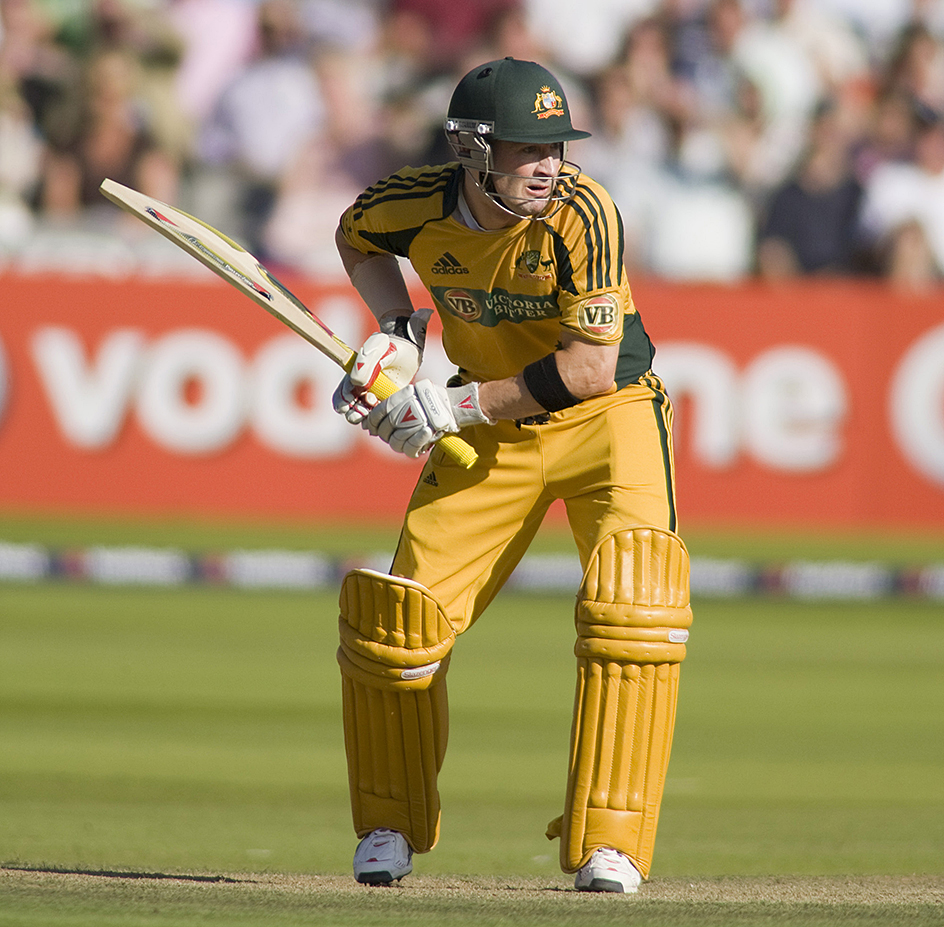
Fred Spofforth was the earliest of Australia’s great fast bowlers. He became known as the demon. Australia has also produced such great fast bowlers as Ray Lindwall and Dennis Lillee. Famous slow bowlers include Richie Benaud, Clarrie Grimmett, and Arthur Mailey. All-rounders include Jack Gregory and Keith Miller, while wicketkeepers include Don Tallon and Rod Marsh. Great cricketers of the 1990’s and early 2000’s include Mark and Steve Waugh, wicketkeeper Ian Healy, fast bowler Glenn McGrath and the brilliant spin bowler Shane Warne, who in 2001 became the first Australian to take 400 wickets in Test matches.
Cricket in South Africa
Cricket is a major game in South Africa. The first recorded match, between teams made up of army officers, took place in 1808.
Organization.
From 1889, the chief internal competition was the Currie Cup, but in 1991 the competition was reorganized. From the 1991-1992 to the 1995-1996 season, the domestic competition was known as the Castle Cup. From the 1996-1997 to the 2011-2012 season, it was known as the SuperSport Series. Beginning with the 2012-2013 season, it has been known as the Sunfoil Series.
Administration.
The ruling body, founded in 1991, is Cricket South Africa. It was formerly called the United Cricket Board of South Africa. It combines the ethnically separate cricket organizations previously set up under the policy of strict racial segregation known as apartheid.
History.
The first matches between South Africa and England given Test match status were played in 1888-1889. Because of political controversy over its policy of apartheid, however, South Africa did not play any official Test matches from 1970 to 1991. Its return to international cricket was marked by three one-day internationals played in India in November 1991, followed by its participation in the World Cup competition in 1992. South Africa then played its first Test match in 21 years against the West Indies in Barbados in April 1992.
Outstanding cricketers.
South Africa has produced many great players, including batsmen Graeme Pollock and Barry Richards, spin bowler Hugh Tayfield, and all-rounder Mike Procter. The South African Basil D’Oliveira moved from Cape Town and played for Worcestershire and England with great success. Leading players in the 1990’s included the fast bowler Allan Donald and the all-rounder Shaun Pollock. Stars of the 2000’s include Hashim Hamla, Jacques Kallis, Kagiso Rabada, and A. B. de Villiers.
Cricket in New Zealand
Cricket is a popular game throughout New Zealand. The first-class sides are Auckland, Canterbury, Central Districts, Northern Districts, Otago, and Wellington.
Organization and administration.
From 1906, New Zealand’s first-class teams competed in a challenge competition, the Plunket Shield. It was named after a governor-general of New Zealand. The competition became a league in 1921-1922. Each team plays eight league matches. New Zealand’s limited-overs competition was introduced in 1971-1972. The ruling body for cricket in New Zealand is New Zealand Cricket.
History.
New Zealanders have played cricket since the 1830’s, and first-class cricket began in the 1860’s. The first New Zealand team to play overseas competed in Australia in 1898. But New Zealand did not achieve Test status until 1929-1930, when New Zealand played a touring MCC side. The only other Test team to play New Zealand before World War II was South Africa.
New Zealand played its first Test against Australia in 1945-1946. But, apart from this one game, New Zealand and Australia did not meet in a Test match series until 1973-1974. Australian cricket overshadowed New Zealand cricket for many years, but New Zealand emerged as a major international team in the 1980’s. They owed much to such batsmen as Glenn Turner and Martin Crowe, and to the all-rounder Sir Richard Hadlee. Modern stars include Brendon McCullum, Ross Taylor, Tim Southee, and Kane Williamson.
Cricket in India
Cricket arouses great enthusiasm in India. It has captured the imagination of many people, especially since India won the World Cup in 1983 and again in 2011.
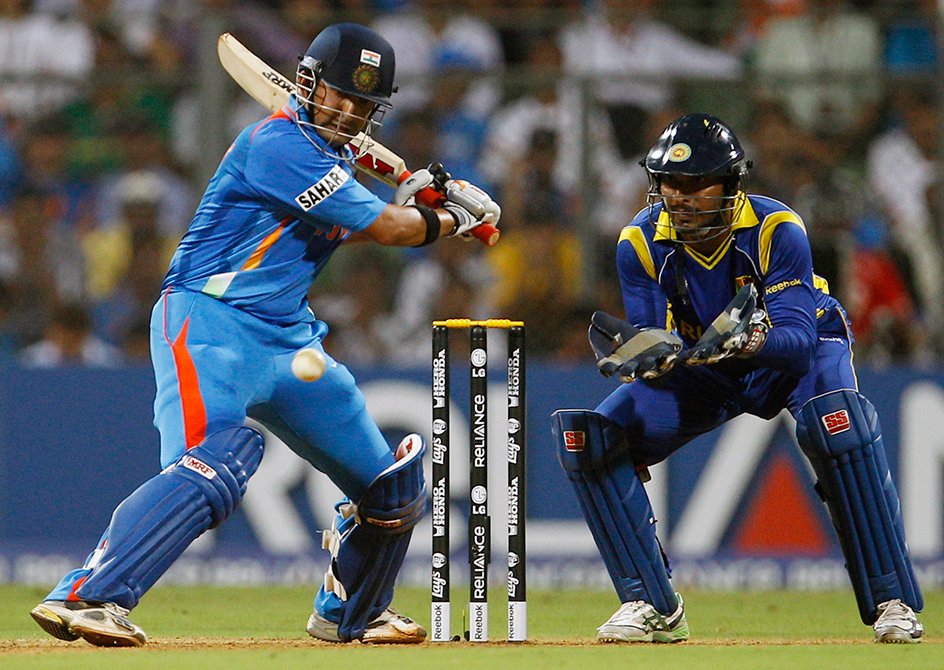
Organization and administration.
The first-class competition is the Ranji Trophy, which was founded in 1934 and named in memory of the great cricketer Kumar Shri Ranjitsinhji. Major centers of cricket include Mumbai (formerly Bombay), whose team has achieved the greatest success in the Ranji Trophy; Delhi; Kolkata (formerly Calcutta); Chennai (formerly Madras); and other state capitals. The governing body for cricket is the Board of Control for Cricket in India (BCCI). In the early 2000’s, T20 cricket captured the public imagination, and the Indian Premier League became one of the most popular leagues in the world.
History.
Old Etonians (former pupils of Eton College, England) played against Parsis in India as early as 1784, and the Calcutta Club, once regarded as India’s MCC, was formed in 1792. India’s first great cricketer, K. S. Ranjitsinhji, played in England for Cambridge University, for Sussex, and in 15 Test matches for England. The first Indian side to have first-class status toured England in 1911, but India did not achieve Test match status until 1932.
Outstanding cricketers.
Great Indian players include the batsman Sunil Gavaskar, the all-rounders A. H. (“Vinoo”) Mankad and Kapil Dev, and several great spin bowlers, including Bishan Bedi and B. S. Chandrasekhar. Outstanding players of the 1990’s included the batsman Sachin Tendulkar and the spin bowler Anil Kumble. In the early 2000’s, stars included Shikhar Dhawan, Zaheer Khan, and Virat Kohli.
Cricket in Pakistan
Since it became an independent nation in 1947, Pakistan has rapidly achieved a considerable reputation in world cricket. In 1992, Pakistan won the World Cup when it beat England in the final.
Organization and administration.
The chief first-class cricket competition is the Qaid-I-Azam Trophy, which was introduced in 1953. The chief one-day competition is the One-Day National Tournament. The supreme body for cricket is the Pakistan Cricket Board (PCB).
History.
Pakistan gained Test match status in 1953, when it played a three-match series against India, winning one game, losing one, and drawing the other. Since then, Pakistan has had an impressive record. Cricket fans were delighted when Pakistan won the cricket World Cup in 1992, led by the brilliant all-rounder Imran Khan. In the early 2000’s, Pakistan has played home international games in the United Arab Emirates because of security concerns in Pakistan.
Outstanding cricketers.
Major batsmen have included three brothers, Hanif Mohammad, Mushtaq Mohammad, and Sadiq Mohammad. Zaheer Abbas, Javed Miandad and Saeed Anwar were other fine batsmen. Abdul Qadir was a great spin bowler, while fast bowlers Wasim Akram and Waqar Younis formed a superb fast bowling attack in the 1990’s. Younis Khan was a dominant player in the early 2000’s.
Cricket in the Caribbean Islands
The Caribbean Islands (historically called the West Indies) have become known for their often spectacular cricket. They were once regarded as brilliant but inconsistent. But in the 1970’s and 1980’s, they dominated world cricket, winning the World Cup in both 1975 and 1979.
Organization and administration.
Six teams—Barbados, Guyana, Jamaica, Leeward Islands, Trinidad and Tobago, and Windward Islands—have competed in regional cricket tournaments since the 1960’s. Beginning in 2009, the tournament has been called the Regional Four-Day Competition. The region’s teams have also competed in a one-day competition that, since 2008, has been known as the President’s Cup. The supreme cricket authority is Cricket West Indies (CWI), formerly known as the West Indies Cricket Board (WICB). It was formed in the early 1920’s. The T20 Caribbean Premier League has become the highest profile tournament.
History.
Cricket began in the British colonies known as the British West Indies in about 1800. By 1863, Barbados, Jamaica, Trinidad, and British Guiana (now Guyana) had cricket clubs. In 1886 and 1887, teams from the West Indies exchanged visits with teams from Canada and the United States. The first Triangular Tournament was staged in 1892-1893 between Demerara (Guyana), Barbados, and Trinidad, but the great distances between the islands made it impossible for Jamaica, which also had a good side, to compete. Seven English sides toured the West Indies before World War I, and the first West Indies team visited England in 1900. They were granted first-class status on a return visit in 1906.
Test match status was gained in 1928. Despite the brilliance of two players, the batsman George Headley and the all-rounder Sir Learie Constantine, the West Indies were at first regarded as better players at home than overseas. West Indian cricket suffered a relative decline in the 1990’s, though great individual performances continued to astound cricket lovers.
Outstanding cricketers.
In the mid-1900’s, the West Indies produced many great players, including Sir Frank Worrell and Garry Sobers. During the 1980’s, the West Indies, under Clive Lloyd and later Vivian Richards, dominated world cricket. Their success was based on a bowling attack consisting of four fast bowlers. Great fast bowlers of this period included Andy Roberts, Joel Garner, Michael Holding, and Malcolm Marshall. In 1994, the left-hander Brian Lara scored 375 against England, the highest individual score achieved in Test cricket to that time. Later that year he scored 501 not out playing for Warwickshire in a county match in England, the highest individual score in first-class cricket. Ten years later, he broke his own record and became the first man to score 400 runs in a Test match. Great bowlers of the 1990’s included Curtly Ambrose and Courtney Walsh. Walsh took his aggregate of Test wickets to a record 519 before he retired in 2001. Modern stars include Dwayne Bravo, Shivnarine Chanderpaul, and Chris Gayle.
Cricket in Sri Lanka
The British introduced cricket into Ceylon (now Sri Lanka) in the 1820’s, and a cricket club was formed in Colombo in 1832. Sri Lanka became a full member of the International Cricket Conference (now the International Cricket Council) in 1981, and it gained Test match status in 1982-83. However, internal strife on the island led to the cancellations of several projected tours, and this proved a major setback in the development of Sri Lankan cricket.
Organization and administration.
Sixteen teams compete in the first-class Premier League Tournament. They are divided into three groups. The top four teams from the previous year are known as the Super Group. The remaining twelve teams are divided into two groups of six teams each. After a preliminary round, the top six teams and the Super Group advance to the Super League. The Super League teams then engage in further playoffs to determine the champions. Sri Lankan teams also compete for the Premier Limited Overs Championship. The supreme cricket authority is Sri Lanka Cricket, known until 2003 as the Board of Control for Cricket in Sri Lanka.
History.
After Sri Lanka gained Test match status, it quickly became established in international cricket. Sri Lanka defeated Australia in 1996 to win the cricket World Cup.
Outstanding cricketers
included the brilliant captain Arjuna Ranatunga, Aravinda de Silva, Sanath Jayasuriya, Kumar Sangakkara, Muttiah Muralitharan, and Chaminda Vaas.
Cricket in Zimbabwe
Traditionally, cricket was a game of the white population of Zimbabwe. But talented black players began to emerge in the 1990’s.
Organization and administration.
Zimbabwe’s top domestic competition is the Logan Cup, which has held first-class status since the 1993-1994 season. Club cricket sides play one-day cricket in the National League. The supreme cricket authority is called Zimbabwe Cricket, known as the Zimbabwe Cricket Union (ZCU) until 2004.
History.
Cricket was first played in Rhodesia (now Zimbabwe) in the early 1890’s, when the territory came under the control of the British South Africa Company. In 1895, the Salisbury Cricket Club (now the Harare Cricket Club) was founded. In 1903, teams began competing for the Logan Cup.
Zimbabwe played in three cricket World Cup series (1983, 1987, and 1992) before it achieved Test match status in July 1992. Since 1992, it has struggled to raise its standards in Test cricket. It beat India in a single Test series in 1998 and also, in the same year, beat Pakistan 1-0 in a three Test series with one match drawn and another abandoned.
Outstanding cricketers.
Major players for Zimbabwe have been Brendan Taylor, Andy Flower, and Heath Streak.
Cricket in Bangladesh
The British introduced cricket to East Pakistan (now Bangladesh) when the area formed part of British India. The game remains popular. From 1953 to 1971, players from East Pakistan were eligible to play for Pakistan. But after the 1971 civil war, when East Pakistan broke away to become Bangladesh, the area lost its Test match status. The ICC granted Bangladesh Test match status in June 2000.
Organization and administration.
In the 1999-2000 season, in preparation for receiving Test status, Bangladesh reorganized its domestic cricket by upgrading the National Cricket League to provide first-class cricket between teams playing three-day matches. The highest cricket authority in Bangladesh is the Bangladesh Cricket Board.
History.
Bangladesh became an associate member of the ICC in 1977. Before achieving Test match status, Bangladesh received One-Day International Status from the ICC in 1997. The team played in the 1999 cricket World Cup, when it pulled off a surprising win against Pakistan. Bangladesh played its inaugural Test against India in November 2000. Modern stars include Saqibal Hassan, Tamim Iqbal, Mashrafe Mortaza, and Mushfiqur Rahman.
Cricket in Afghanistan
Cricket is the most popular sport in Afghanistan, though the game became established only in the late 1900’s. Star players such as Rashid Khan, Mohammad Nabi, and Shafiqullah Shafaq are national heroes. The sport received a tremendous boost in 2017 when the ICC admitted the Afghanistan national team as a full member. As a full member, the team became eligible to participate in Test matches and receive significantly more funding.
Organization and administration.
The Afghanistan Cricket Board (ACB), formerly the Afghanistan Cricket Federation, is the official governing body of the sport in the country. The ACB has divided the country into five cricket regions to more efficiently manage the sport.
History.
The roots of cricket in Afghanistan date back to the mid-1800’s, when British troops played the game while stationed in the country.The modern history of cricket in Afghanistan began in the 1990’s, when the sport became popular among Afghan refugees who fled to neighboring Pakistan to escape battles between rebels and the Afghan government. Pakistan was a full member of the ICC. The Afghanistan Cricket Federation was formed in Pakistan in 1995. When the refugees returned to Afghanistan in 2001, they brought the game with them. Afghanistan became an associate member of the ICC in 2013, and a full member in 2017.
Cricket in Ireland
Cricket has struggled for more than a century to establish itself as a major sport in Ireland. It was overshadowed by the popularity of such native Irish games as hurling and Gaelic football. However, cricket in Ireland received a major boost in 2017, when the ICC granted the Irish national team full member status, allowing the team to play in Test matches and to receive funding.
Organization and administration.
Cricket in Ireland is governed by the Irish Cricket Union, founded in 1923 and better known as Cricket Ireland. The organization has authority over men’s and women’s cricket in both the Republic of Ireland and Northern Ireland.
History.
The English brought cricket to Ireland in the late 1700’s, but the sport frequently struggled for widespread acceptance. For example, in 1884, the Gaelic Athletic Association, which governed the Irish games of hurling and Gaelic football, imposed a ban on what it called “foreign games.” Anyone who participated in one of the barred sports was banned from playing Gaelic sports. The ban, which was only lifted in the 1970’s, hindered the growth of cricket’s popularity. Irish cricket’s main problem in the late 1990’s and early 2000’s was the drain of many of its best players to England. Such skilled players as Ed Joyce and William Porterfield played in England as well as Ireland. The upgrade of Ireland to full membership in the ICC in 2017 allows players to earn more money in international competition, encouraging them to play at home rather than for other countries.
Cricket in other countries and regions
Cricket is also played in many other parts of the world. More than 90 other nations have representatives on the International Cricket Council.
